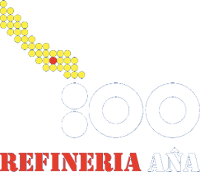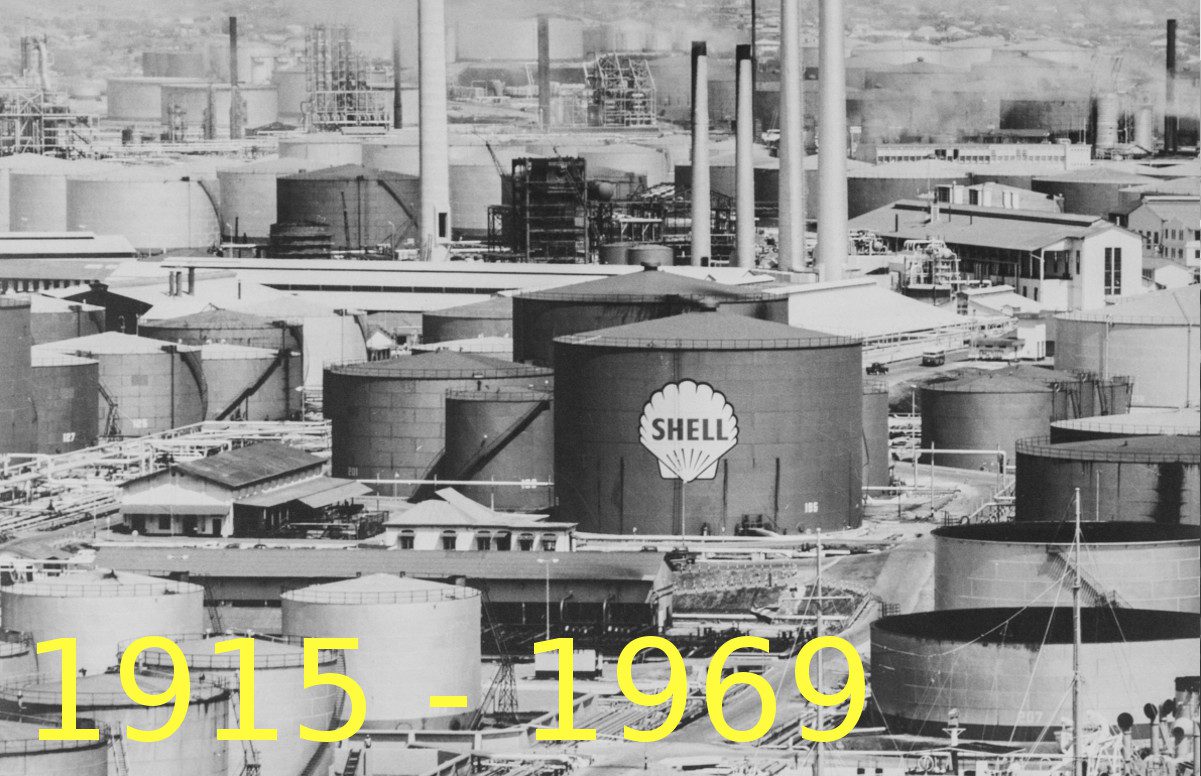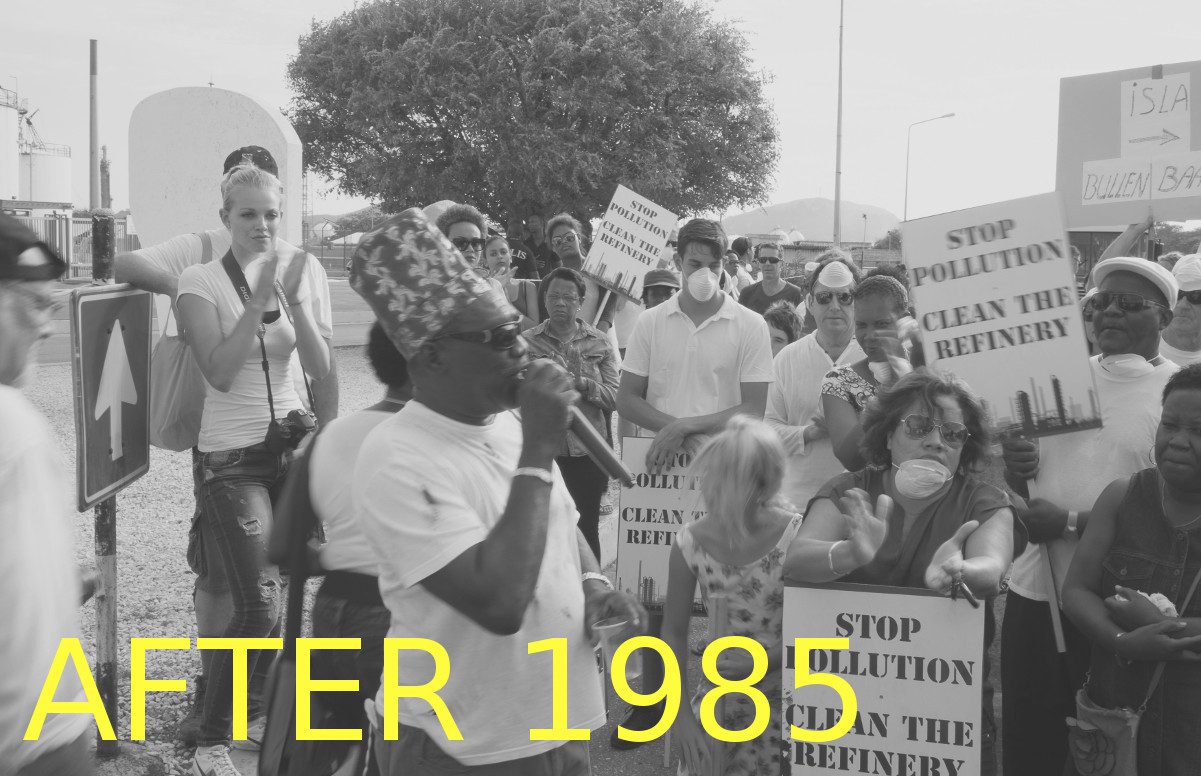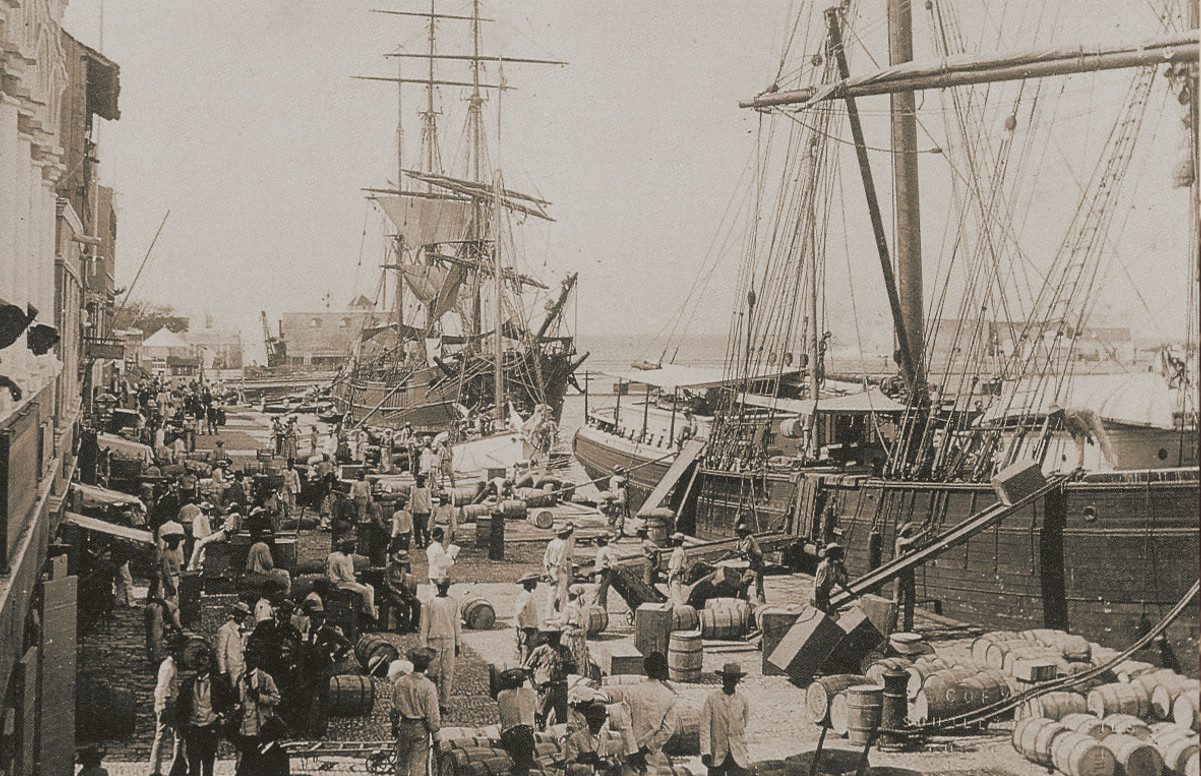
Isla den Nos Bida
100 years Refinery in Curaçao – 100 aña Refineria na Kòrsou
Exhibition
Curaçao before 1915
Where the large trade houses in Willemstad were mostly internationally oriented, a smaller scale economy existed in the countryside, where agriculture had continued after the Emancipation in 1863. Yet the Curaçaoan soil barely yielded substance level food crops, and after a substantial drought at the end of the 19th century the situation grew destitute. In 1899 a Dutch newspaper, De Standaard, concluded: “The misery – because poverty is already a fact – threatens the colony with her emaciated hands and the future is pitch black unless unexpected help is forthcoming… God have mercy on poor Curaçao. Let Him prevent complete extinction.”
The situation let the Dutch parliamentarian Van Kol, who visited Curaçao in 1904, to call on his fellow politicians. “If this Parliament can not muster the support to help this destitute colony, then they must have the courage to humbly release it in the hands of the highest bidder.” A desperate plea, yielding little result.
In the countryside famine raged. Due to the psychological, emotional and physical abuse experienced during slavery, many Curaçaoans abhorred working the land or staying on the plantations. The paga-terra system stipulated farmers had to work the land of the shon before tending to their own. Independent farmers were faced with a faulty administration of the domain lands leased to them by government. Cattle holders were overall more successful. In addition to supplying dairy products, meat and wool for the local market, goat hides were exported to the Netherlands in bundles of 100 a piece while the manure produced by the local cattle was shipped to the British Caribbean Isles, mostly Barbabos and Grenada.
Meanwhile, artisans such as cabinetmakers making old-fashioned Curaçao antique furniture from solid mahogany had a hard time battling the competition of lighter and more modern products being imported from the United States and Europe.
For women, especially those in the rural areas, plaiting so-called ‘Panama hats’ was a major source of income. The material to braid the hats was imported from Venezuela, Colombia and Cuba, while the hats were exported to the United States, New York being the main destination. By 1903, 3,728 braiders were active on the island, while three years later their numbers had jumped to 4,632. A dozen hats took eight days of diligent plaiting. At the beginning of the 20th century ‘Panama Hats’ were one of Curaçao’s most important export products.
Yet the one brand that put Curaçao on the map more than any other export product was the Blue Curaçao liqueur. Produced by Senior & Co at Chobolobo, this drink made from the dried peel of the locally grown laraha citrus fruit at Siberie, became an international favorite as a mixing component in cocktails, which by the 1860s generally included a liqueur. Due to Blue Curaçao the name Curaçao became known the world over.
To play into the way coinage and cash money was handled, SEL Maduro & Sons had requested to open a circulation bank in 1901, and again in 1906. Their bid was initially turned down. In 1916, the Maduro’s again petitioned to establish a bank considering the construction of the refinery. This time their request was approved immediately. On January 1st 1917, the Maduro’s Bank became the first commercial bank in the colony.






